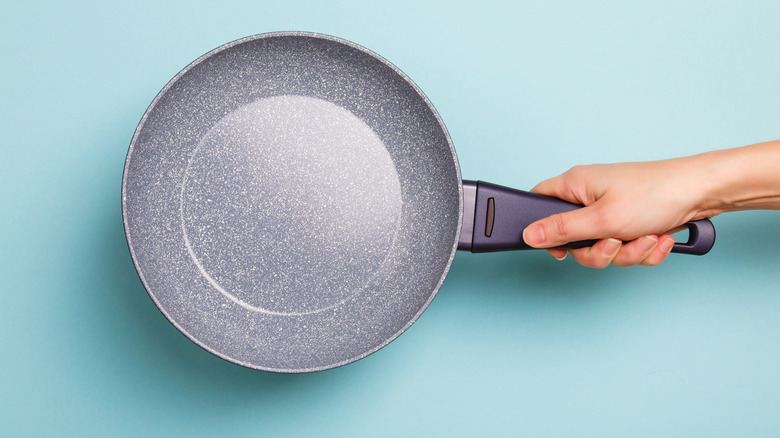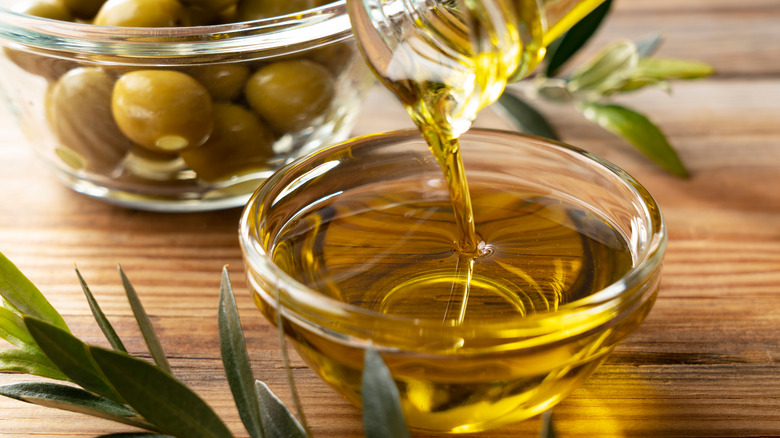Why You Should Almost Never Add Ingredients To A Cold Pan
To become a great cook, one has to start with the basics. Knowing the difference between searing and poaching, how to properly cook eggs, or how to chiffonade herbs like basil leaves are a few of these fundamental skills, as noted by Oxo. But, knowing why you should preheat a pan before cooking is perhaps one of the most important skills in the culinary world.
Recipe Tips explains that preheating cooking vessels like skillets or ovens involves heating them up to a certain temperature prior to cooking. So, when a recipe reads something like, "preheat an oven to 375 Fahrenheit," that means you should set the oven to 375 Fahrenheit, wait for that little beep sound to go off, and then add whatever needs to be baked or roasted.
Now you might be thinking, "What difference does it make?" Surely, foods like orange chicken stir-fry or pan-seared pork chops will turn out the same regardless if the pan starts cold or hot. Wrong. Here's why you shouldn't add (most) ingredients to a cold pan.
Cold fat gets absorbed like a sponge
Hot oil has a multitude of cooking benefits. For starters, it gives foods like tomahawk steak and pan-fried chicken thighs a beautiful brown color and flavors that our palates crave, per Science Direct. If these meats were added to a cold pan filled with cold oil, then they would absorb it like a sponge and stick to the surface of the pan instead of searing so effortlessly, via Kitchn.
New England Today provides a few more science-based tidbits on why this is so. They explain that the metal surface of a pan is akin to very tiny lines that expand when heated. If the surface is cold though, those lines tend to stay closed and stick to foods. When the surface is hot they expand making the ingredients free and clear to sear.
Granted, there are a couple of ingredients that should be started in a cold pan because they're prone to burning, according to Salt Sear Savor. These include garlic, spices used for toasting and/or blooming, and butter used for browning. Bacon, on the other hand, doesn't burn as quickly but benefits from a cold pan because the fat tends to render out as the temperature rises, which helps with more even cooking. So, for better-tasting and more aesthetically-pleasing foods, be sure to spend a little extra time heating up that pan before adding in your ingredients.

